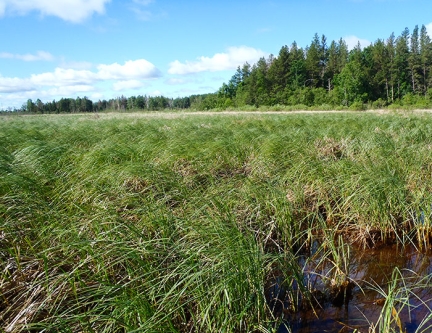Image

Minnesota's 10.6 million acres of wetlands serve critical functions, such as providing wildlife habitat, filtering pollutants and sediment out of water, and lessening the threat of floods by storing water during snow melt and rain storms. Wetlands cover almost 20% of the state, roughly 10 times more area than lakes and rivers combined.
Overall conditions
- The quality of the state’s wetlands is good overall. Native vegetation can be found in 67% of wetlands, mostly because of the large amount of high quality wetlands in the northern region.
- Wetland quality in more developed parts of the state is largely degraded.
- Widespread wetland losses have stopped and Minnesota actually has gained an estimated 8,895 acres of wetlands between 2006 and 2014. Most of the gains came in the form of pond-like wetlands.
- Many natural wetlands are also being converted to farmed wetlands. Both pond-like and farmed wetlands provide fewer benefits than natural wetlands.
North-northeastern region and the Arrowhead
- Original wetlands. About 75% of all of Minnesota’s wetlands are in this region, including more than 90% of the wetland acres that existed before Europeans settled here. Intact wetlands contribute to the good water quality found in the area.
- Good vegetation. Approximately 84% of the region's wetlands have high-quality, natural vegetation.
Central region and metro area
- Invasive species. Non-native invasive plant species have taken hold or other significant changes in vegetation have occurred in 82% of the wetlands — similar to southern and western Minnesota. Invasive plant species are linked to all types of wetland impacts and can force out native plants.
- Stable quality. Forty-three percent of the area's depressional wetlands with open water have healthy macroinvertebrates communities. Depressional wetland quality was stable from 2007-2012.
Southern and western Minnesota
- Lost wetlands. Counties in this region have lost an average of 95% of their wetlands due to artificial drainage and agricultural development. These changes are a significant reason for the poor water quality in streams and lakes in the region.
- Difficult recovery. Non-native invasive plant species have replaced native plants, or other significant changes in vegetation have occurred in 82% of the wetlands in this region. Wetlands that were plowed and left to recover on their own have degraded vegetation.
Restorable wetland prioritization tool
Wetland restoration is a common approach to improve water quality in lakes and streams. The MPCA and the University of Minnesota have developed an online restorable wetland prioritization tool, which can identify restorable wetlands, prioritize areas more likely to result in sustainable wetlands, and predict the benefits of restoration.